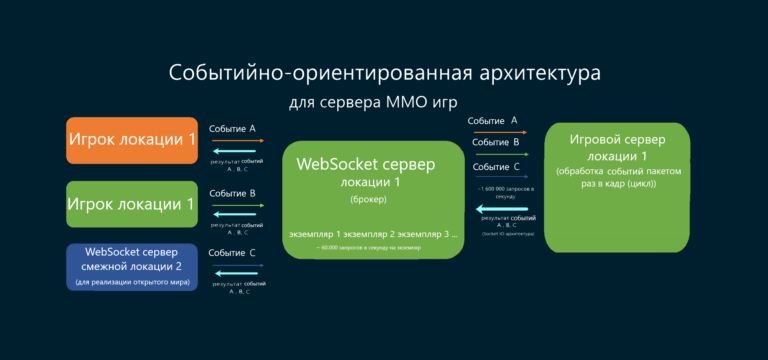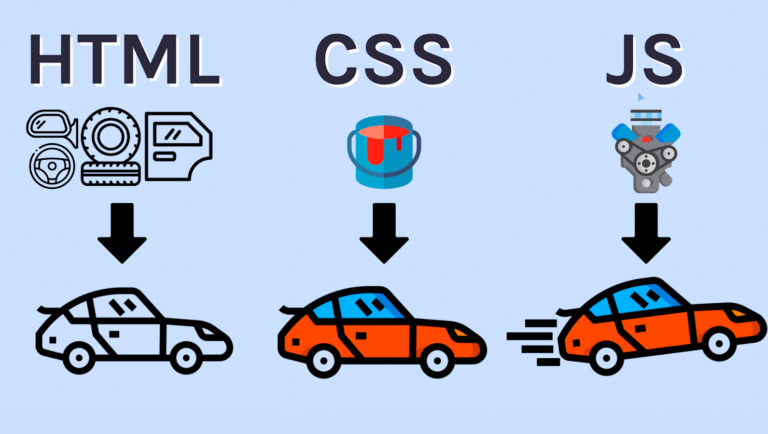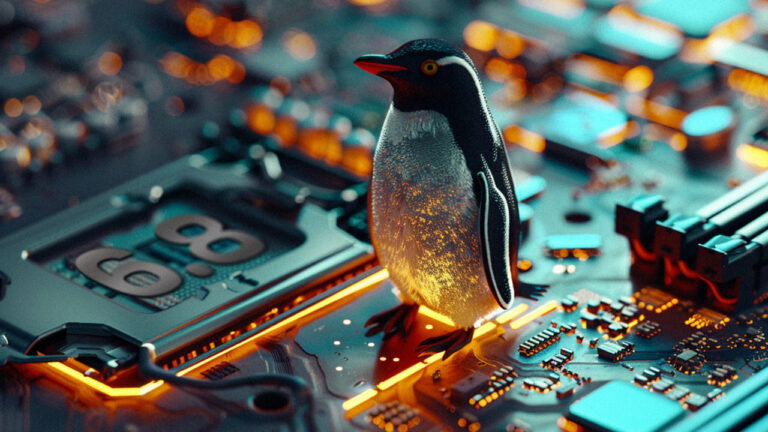Antiquities: a home minidisk and a ballad about tombs

It remains to choose the preferred era, but there were no special problems: I wanted the most functional, maximum features and capabilities. Today’s post is about the Sony MDS-JB980 functional minidisk deck. This is the only device in my rack with high-tech that connects to a computer via USB. And at the same time it became interesting to me: when the component audio started, why (for most people) ended, and why did the fashion for building pyramids from devices, necessarily with large speakers, arise?
The collector’s diary of old pieces of iron I keep in telegram.
Previous Related Articles:
– Minidisc in the natural habitat
– Minidisk in the era of iPod
– Sony MZ-1 or a story about a prototype that went into production
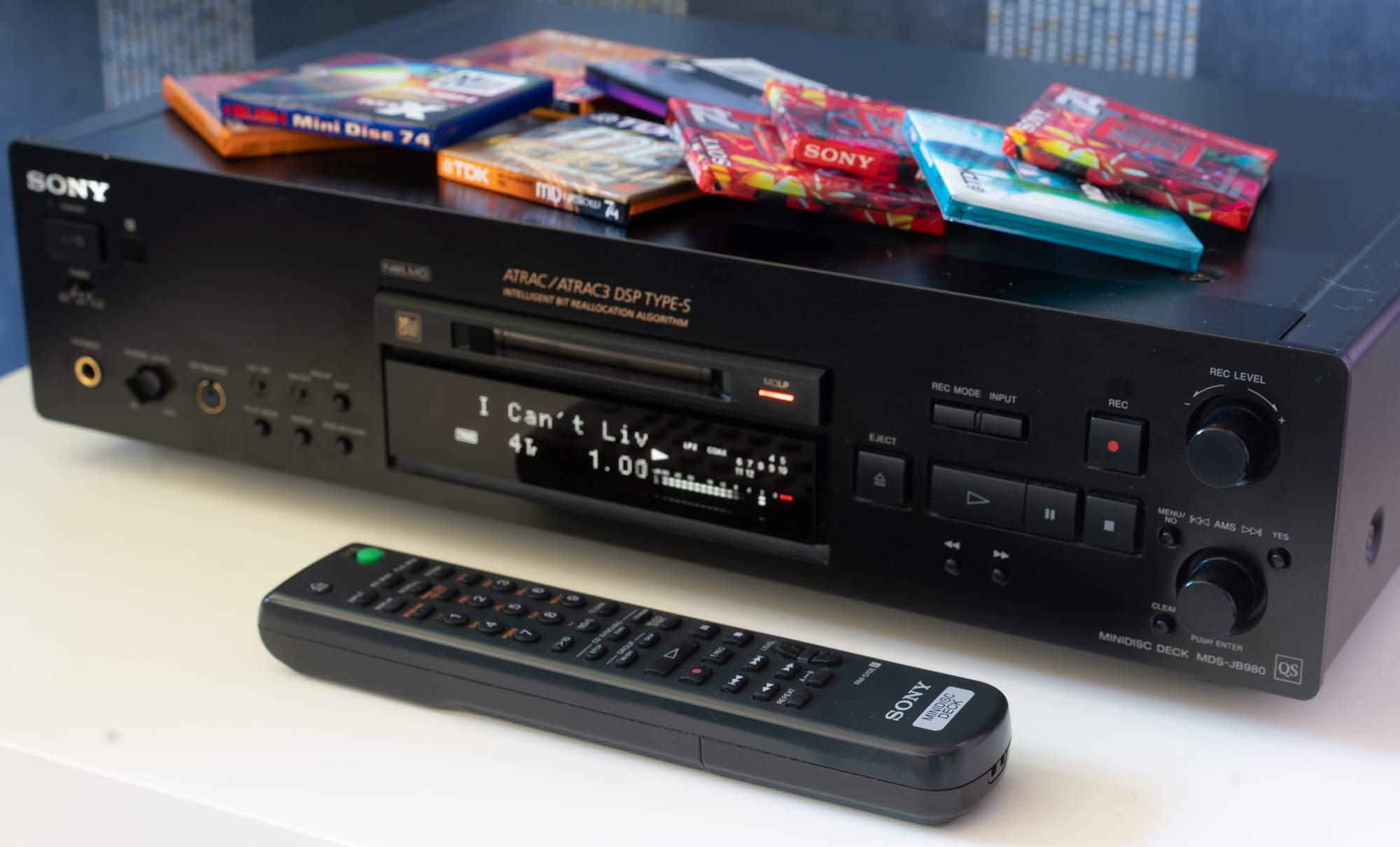
Minidisk is a magneto-optical digital sound carrier (and later data) on a 64 mm diameter disk. To record sound, a proprietary lossy compression standard is used. Before talking about the deck, I want to explain why I chose it. And for this you need to recall what kind of minidisk had options. Roughly enough, you can define three generations of minidisc:
– The first one. The original ATRAC codec with a bitrate of 292 kilobits per second is used, up to 80 minutes of stereo sound is placed on one disk. Portable, stationary, professional and automotive devices of this generation were produced from 1992 to 2001. Many justifiably consider the “golden era” of the minidisc to be the end of the nineties, it was a time when this format was really relevant, but was beyond the financial capabilities of most people.
– The second one. A new ATRAC3 codec appears with a lower bitrate (132 or 64 kilobits per second, corresponds to the LP2 and LP4 modes). Up to 160 minutes of music of decent quality can be recorded on one disc. And most importantly, it becomes possible to record music from a computer, faster than rewriting in real time. Almost like a flash player or an iPod with a hard disk, or CD-R. For this format, a full range of devices was available, mostly from Sony, but other manufacturers did not support it so actively. It existed from 2000 (connecting to a PC, NetMD function – from 2001) until the end of the decade.
– The third. A new type of Hi-MD media has been invented. The dimensions are the same, but the capacity is 1 gigabyte, instead of 230 megabytes in the original. The new ATRAC3Plus codecs support a wide range of bitrates from 48 to 352 kilobits per second, supports audio in CD quality without compression, later native MP3 support appears. Technically, this is the best implementation of the format, but Hi-MD was released in 2004, when there was no special need for a physical medium for sound. The third incarnation of the minidisc lasted until 2014. There were few devices released, and, most importantly for me, there was a portable, just one stationary deck with truncated functionality, and no car radio. The maximum range of devices and technologies was presented in the second generation of the minidisk.
The stationary minidisc deck is a very strange device today. Imagine a large chest with a bunch of buttons that can only play MP3s. And here it’s about the same. The mini-disk was born as a portable, youth device, but it was not possible to get into this audience due to the high price of both players and media. In 1994, the positioning of the format had to be changed, releasing devices for a more solvent audience. The first stationary deck was released – Sony MDS-101 and car radio. Due to errors in the implementation of lossy compression in the first devices, the reputation of the minidisc among music lovers and audiophiles (that is, people with money) was spoiled. In 1996, the Japanese manufacturer tried to convince them that the format was good, and the bugs were fixed. The MDS-JA3ES stationary deck is hefty. coffin with superior performance, cooler than CD players.

One of the ES series mini-disk recorders could very well become my “retrotopik”, but there is one problem: they all belong to the first generation, do not support PC communication and, with the exception of the last two models (hard to get), new compression formats with ATRAC3 loss . Why did you buy such expensive devices? In 1996, the main argument was recording. A high-quality mini-disc deck could be used to digitize vinyl and magnetic tapes, divided into tracks and tagged. Followed by digital listening at home, or on the go. At the beginning of the new century, this advantage came to naught: it was more logical to use a computer for digitizing old media, for which quite high-quality audio interfaces were already produced. A separate device, a minidisk or a CD recorder, made sense only if you did not want to deal with new computer technologies at that time.

So my new, old Sony deck MDS-JB980 was released in August 2002. It belongs to the QS series, which in terms of Sony is lower than ES, but still not bad. This is a very interesting exhibit of the sunset era of physical media, one of the best. We can say that these are two devices in one: an autonomous system for digital sound recording and an external audio storage medium for a computer. The first, however, succeeded Sony much better than the second.

MDS-JB980 can record analog and digital audio signals onto a mini-disc. It supports three bitrates: the original 292 kb / s, and the more modern 132 and 64 kilobits (the latter, however, is only suitable for speech and if you really want to fit five or more hours of music on one disc). It offers good audio editing options after recording: splitting into fragments, deleting and moving tracks, gradually increasing or decreasing the volume at the beginning and end of a track. You can even change the level of the recorded signal, for example, make the song “too loud” too quietly recorded.

There are three options for entering track names: from the buttons on the front panel, from the remote control, or using the PS / 2 keyboard. Only latin is supported. I tried several recording scenarios for late nineties technology. For example, the digitization of vinyl: we write, in the process we divide it into tracks, after recording we delete the extra pauses at the beginning and end of the record. For records with an “endless loop” (for example, the publication of “Sergeant Pepper” The Beatles) can be applied at the end of Fade Out. Since in LP2 mode (132 kilobits) quite a lot of music is placed on the disk, it is possible to divide it into groups, similar to folders on a USB flash drive.

The easiest way is to rip music from a CD, especially if the CD player is from the same manufacturer. One button on the remote starts the disc playback and recording on the MD deck. When connecting with an optical cable, the tracks are arranged automatically, after just plugging in the keyboard and registering song names if you really want to. At the end of any recording session, it is desirable to eject the disc from the device – this way the table of contents is finalized. Almost no suffering, unlike my experience with the rival Digital Compact Cassette format. Although it’s still strange: digitizing and editing sound without a computer, old-school, using buttons and rotary knobs.
Minidisk and Windows 10
As a device of its era, this mini-disk deck is good, but I want to use a unique feature, namely the built-in USB port. And here oddities begin, their own unique approach. In previous studies, I used an old Windows XP laptop to communicate with mini-disk devices. This time I wanted to fasten the retrodevice to a modern computer. This is where the familiar difficulties of other retrodevices begin. The proprietary program SonicStage runs in Windows 10 without problems (you only need to set the compatibility mode with Windows XP). Devices are not visible – drivers for minidisks with NetMD features and the ability to work with a PC were released only for 32-bit operating systems. The SonyInsider forum has instructionto which the driver for 64-bit Windows is attached. To install, you will need to temporarily turn off the mandatory signature of drivers, but in general, everything works.

It works pretty weird. All minidisc fans are forced to operate software in 2007. It is not very convenient in itself, so age also affects it. At each launch, SonicStage tries to go to Sony’s servers and update some information there: most likely this is the rudiment of a now-defunct music store. When recording a minidisk, question marks are temporarily displayed instead of track names. SonicStage leaves a bunch of converted files in a temporary folder and never deletes them. And of course, nothing is supported except 26 letters of the Latin alphabet and numbers – importing tracks with tags or file names in Russian will fail. In a very crooked way, you can record a disc with Japanese characters in tags.

Working with a minidisk on a computer in 2020 looks like this. In the Foobar player, I convert music from the FLAC format to WAV. This is the only way to upload music to SonicStage without compression, apart from the WMA Lossless codec, which is no longer supported by regular Windows tools. I import WAV into SonicStage, prescribe tags. I record the downloaded album or collection on a mini-disc. On the MDS-JB980, a separate button is allocated for communication with a computer. In NetMD mode, all control is transferred to the computer, the buttons on the front panel and on the remote control do not work. From SonicStage you can start playback, delete individual tracks, rename songs, divide tracks into groups. 80 minutes of music are recorded on a minidisc for about 20 minutes, which is by the way slower than on a portable of the same release year.

Everything works, but there is a feature about which I already wrote in previous articles. SonicStage normally works only with the LP2 format and a bitrate of 132 kilobits per second. There is a compatibility mode – you can record a disc in the original ATRAC format with a bitrate of 292 kilobits. But in this mode, there is a forced transcoding to LP2, that is, double compression with losses, and an 80-minute album is written for about an hour. In general, this is not the best option: for recording in the original ATRAC from a computer, you can use only software developed by enthusiasts, the fruit of reverse engineering of a closed communication protocol. I will write about him in the next article.
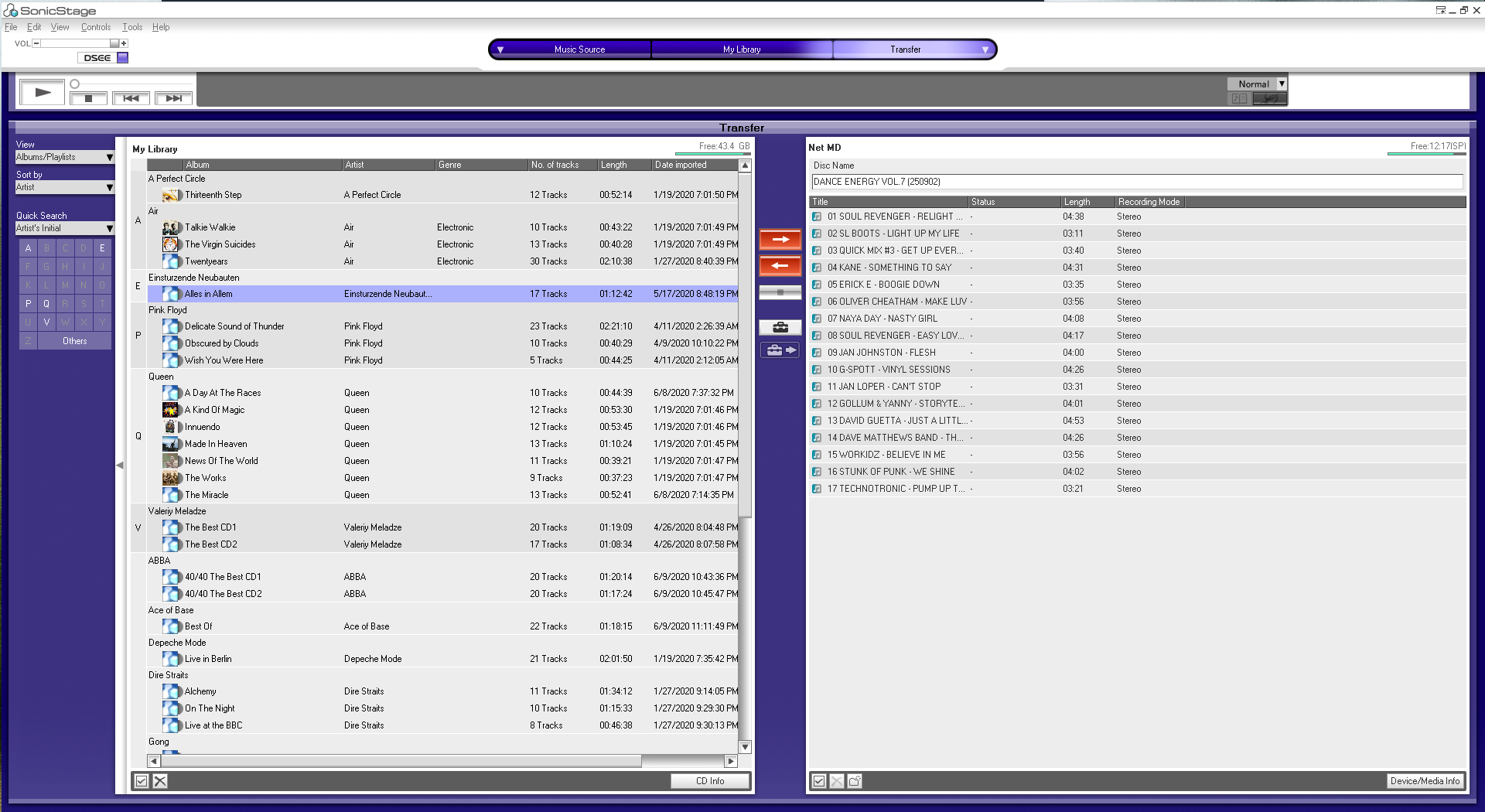
Recording mini-disks from a computer is a fairly convenient process when compared with audio tapes or DCC. And not the most convenient in comparison with the Apple iPod and even more so with any player on flash memory. The NetMD minidisk deck turns into essentially a CD-RW recorder. It works pretty well, it writes quickly, SonicStage allows you to organize a library almost as conveniently as in iTunes or Foobar (but does not support many modern formats, such as FLAC or AAC). But the record is only one way. There is no way to record data (it will appear only in 2004, when no one was already making stationary devices). There are meaningless bitrate restrictions. In the early software versions 2001-2002 there were also severe limits on copying music to disk, one track no more than three times. In 2002, the mini-disc played the iPod in convenience, functionality and in part price. But, if you had a lot of money (about 400 dollars), you could have a portable device and a real home high-end with excellent sound quality and digital output!
Ballad of the Coffins
This mini-disc deck is one of the last representatives of component Hi-Fi. More precisely, you can buy similar music boxes new today: a CD player, amplifier, or even a digital media player. But the time of the racks with the equipment is gone. And how long did this era last? You can count from the first radios of the beginning of the last century: large devices, solid devices. Gramophone players were quickly added to them. The first device of this type in my family is the radio Ural 1949 year:
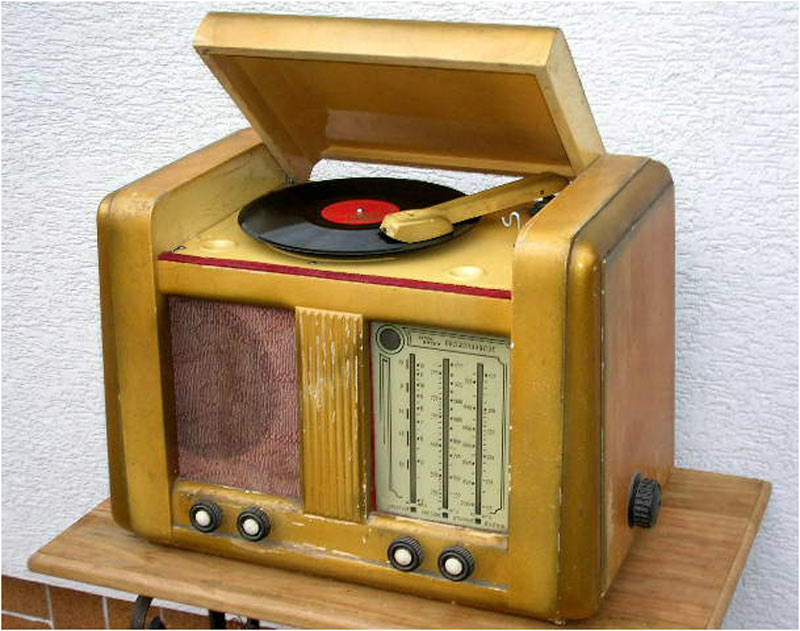
As you can see, this is an integrated device: everything is included, and the receiver, and the player, and the amplifier, and the speaker. The Hi-Fi industry has been actively developing in the West since the late forties, when in fact sources of high-quality sound begin to appear: FM broadcasting, long-playing vinyl. Reel tape recorders (50s) and compact cassettes (60s) are gradually added to them. How these devices were packaged is not a matter of technology, but of design, of consumers’ expectations of an expensive purchase. You can see, for example, in the story from Pioneer, and observe how, since the late sixties, single devices packaged in expensive wood have become more compact, separated into components. If in the sixties even separate speakers were rare, then in the eighties, a hi-fi lover could assemble his own system from a huge number of available tape recorders, tuners, amplifiers and so on.

In fact, combined devices and component Hi-Fi existed in their parallel universes. Most of us dreamed of at least a music center, so that “all in one”, in the eighties, mini-systems that can accommodate even in a small room became popular. Assembling an audio system at will, from separate devices is the destiny of non-poor people and / or wanting to get the maximum functionality, quality, convenience. In the late seventies, video – VHS, Betacam and laser discs were added to the sound. The first “coffin” that my parents buy is not a mini-disk, and not a cassette deck, but a VCR. In any case, such devices occupy a central place in the room. They are proud, they should look richlysurprise guests. A variety of formats play a role: every self-respecting music lover should have a vinyl player, and a cassette player, later a CD, a good radio receiver. All this must somehow be connected with each other. In the nineties, attempts began to adapt the computer to the same concept: in a case with a display and remote control, with a connection to a conventional TV.
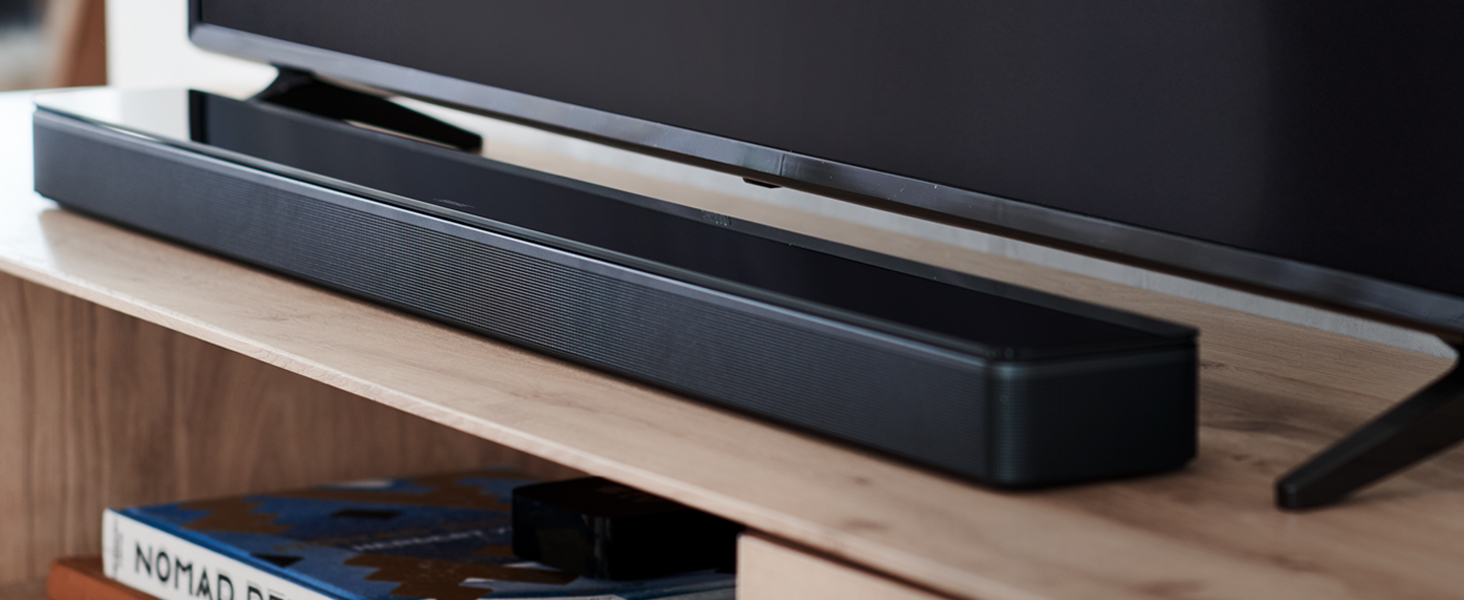
By 2020, all this is almost completely disappearing. A set of diverse equipment is reduced to one speaker, under the TV or separately. You can control it from a TV, or from a smartphone. Everything that previously required a set of five devices or a separate music center is available from the phone. A thing of the past, along with other physical media, is not only a mini-disk, but in general the idea of a large-block Hi-Fi. If you really want, then you can organize it. But not at all necessary.

First of all, this is pretty pointless. Even high-quality, sophisticated components now fit in a box the size of a video cassette. This was already noticeable in 2002: the mini-disk recorder inside is empty, there is plenty of free space. Modern Hi-Fi does not require large boxes, and manufacturers either follow the lead of conservative users, or significantly, often beyond reason, complicate the scheme so that felt the power. Home audio technology has evolved from devices the size of a washing machine to handheld devices that are no worse than dinosaurs in the past in terms of characteristics. Apart from the speakers, of course: here the size matters, but most demanding listeners don’t have to buy two-meter boxes. I’m not a big fan of portable bluetooth speakers, but I use compact monitors with a subwoofer in my audio system. It’s more convenient than looking for a place for a full-sized system.
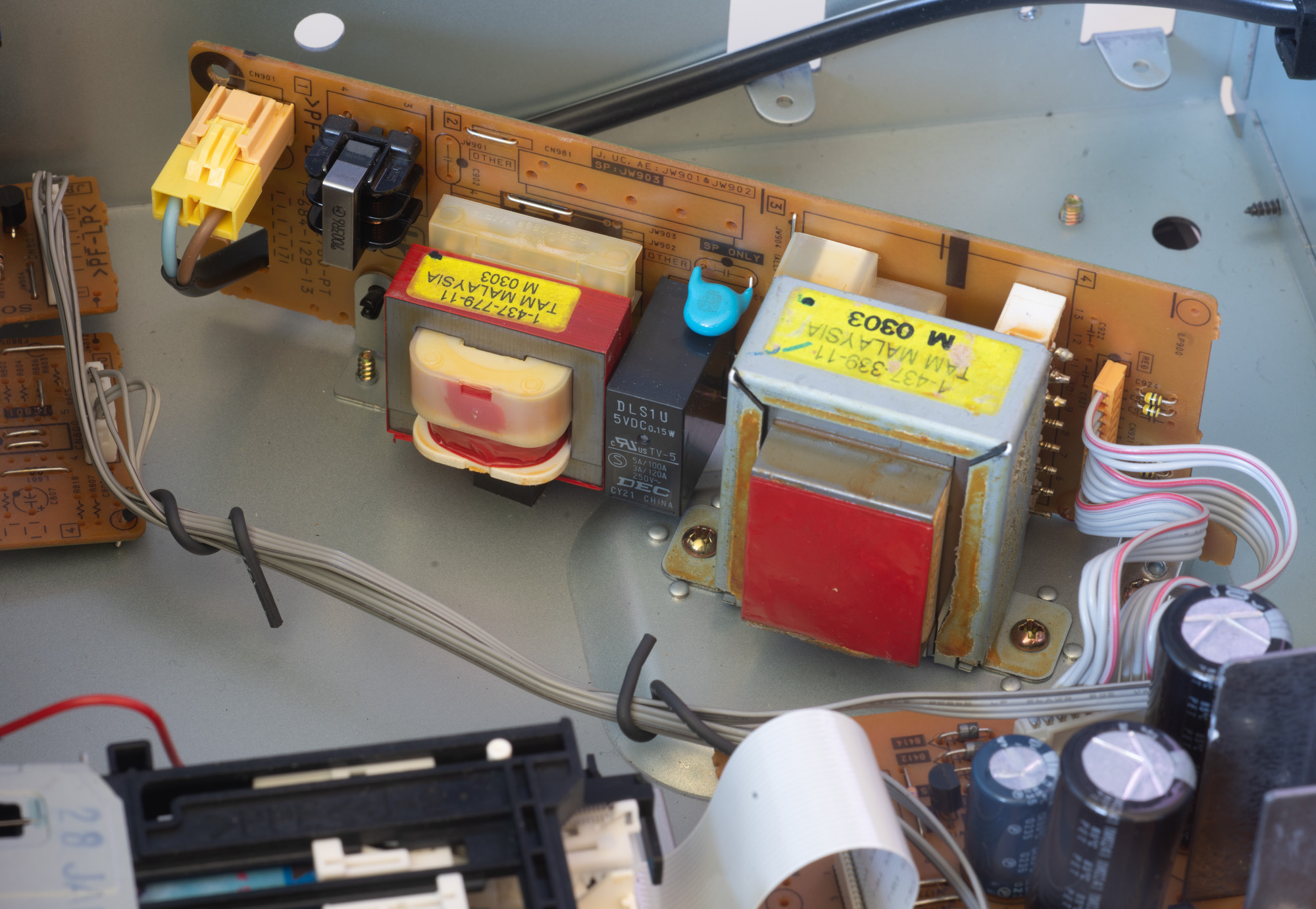
It turns out that I’m not only building a system for outdated media. I capture ideas that are forming in the past, which shaped the look of our home, which were widely discussed in specialized media and in narrow circles of connoisseurs. I am building my pyramid of obsolete devices that were swept away by general computerization. As a man of the old school, I find a certain charm in these devices, I enjoy the control with the help of these buttons, and not just from the touch screen. I am going against the progress. Using the relative cheapness of retro devices, I bring them to mind, and now I can operate with five different old media: a CD, an audio cassette, vinyl, a digital cassette and a mini-disc. I plan to build a mini-disk infrastructure further, the automobile part is next in turn.

